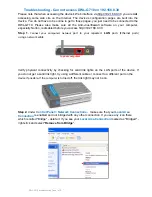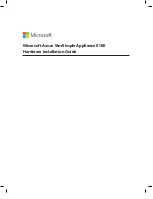
107
Destination Cost Type NextHop AdvRouter Area
10.2.1.0/24 3 Transit 10.2.1.2 10.4.1.1 0.0.0.1
10.3.1.0/24 7 Inter 10.2.1.1 10.2.1.1 0.0.0.1
10.4.1.0/24 3 Stub 10.4.1.1 10.4.1.1 0.0.0.1
10.5.1.0/24 17 Inter 10.2.1.1 10.2.1.1 0.0.0.1
10.1.1.0/24 5 Inter 10.2.1.1 10.2.1.1 0.0.0.1
Total Nets: 5
Intra Area: 2 Inter Area: 3 ASE: 0 NSSA: 0
4.
Configure route redistribution:
# Configure OSPF to redistribute the static route on Router C.
[RouterC] ip route-static 3.1.2.1 24 10.4.1.2
[RouterC] ospf
[RouterC-ospf-1] import-route static
[RouterC-ospf-1] quit
# Display routing information on Router D.
<RouterD> display ospf routing
OSPF Process 1 with Router ID 10.5.1.1
Routing Tables
Routing for Network
Destination Cost Type NextHop AdvRouter Area
10.2.1.0/24 22 Inter 10.3.1.1 10.3.1.1 0.0.0.2
10.3.1.0/24 10 Transit 10.3.1.2 10.3.1.1 0.0.0.2
10.4.1.0/24 25 Inter 10.3.1.1 10.3.1.1 0.0.0.2
10.5.1.0/24 10 Stub 10.5.1.1 10.5.1.1 0.0.0.2
10.1.1.0/24 12 Inter 10.3.1.1 10.3.1.1 0.0.0.2
Routing for ASEs
Destination Cost Type Tag NextHop AdvRouter
3.1.2.0/24 1 Type2 1 10.3.1.1 10.2.1.1
Total Nets: 6
Intra Area: 2 Inter Area: 3 ASE: 1 NSSA: 0
The output shows an AS external route imported from the NSSA area exists on Router D.
OSPF DR election configuration example
Network requirements
•
Enable OSPF on Routers A, B, C, and D on the same network.
•
Configure Router A as the DR, and configure Router C as the BDR.
















































